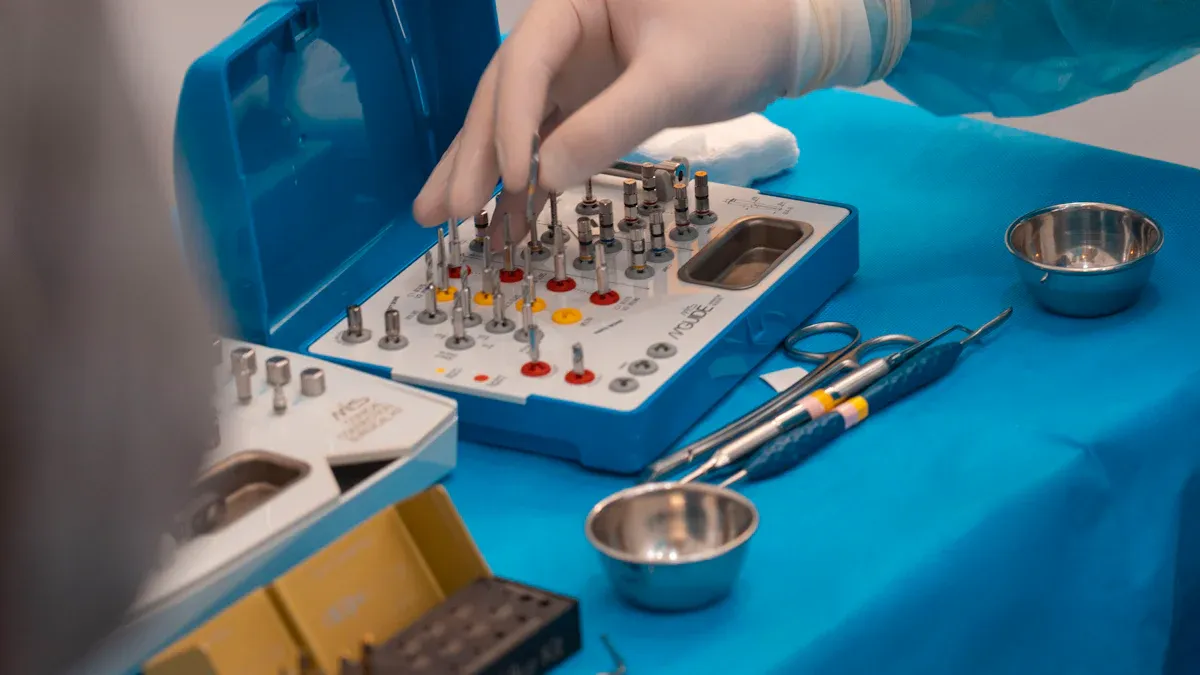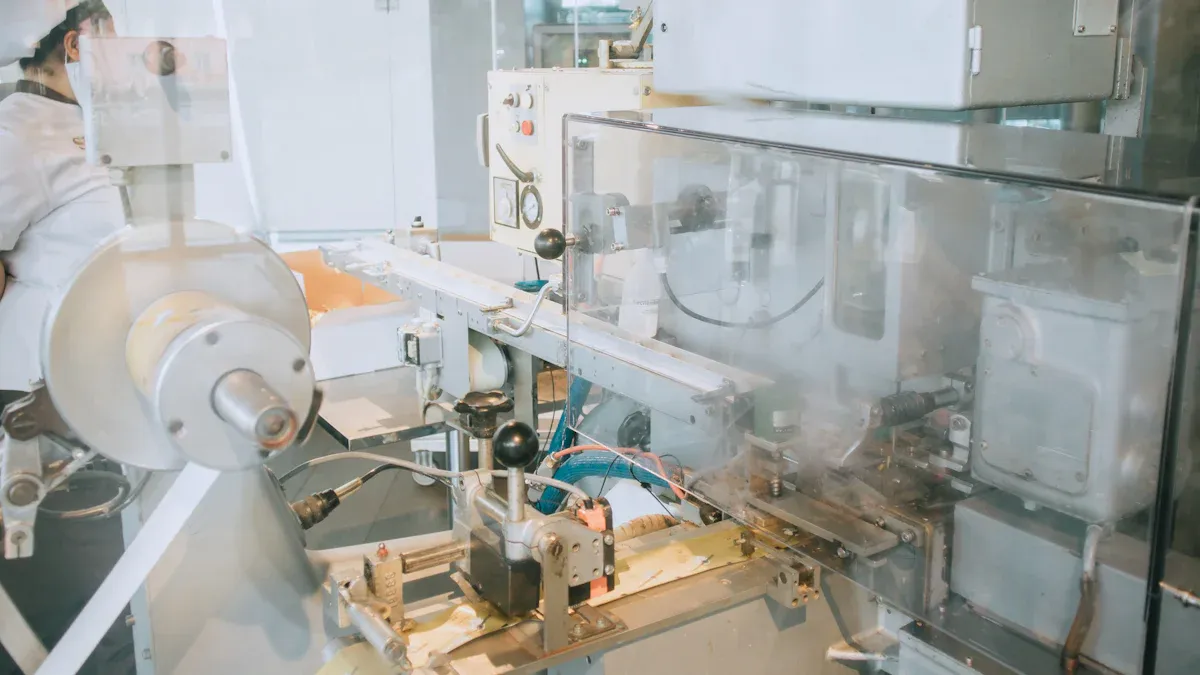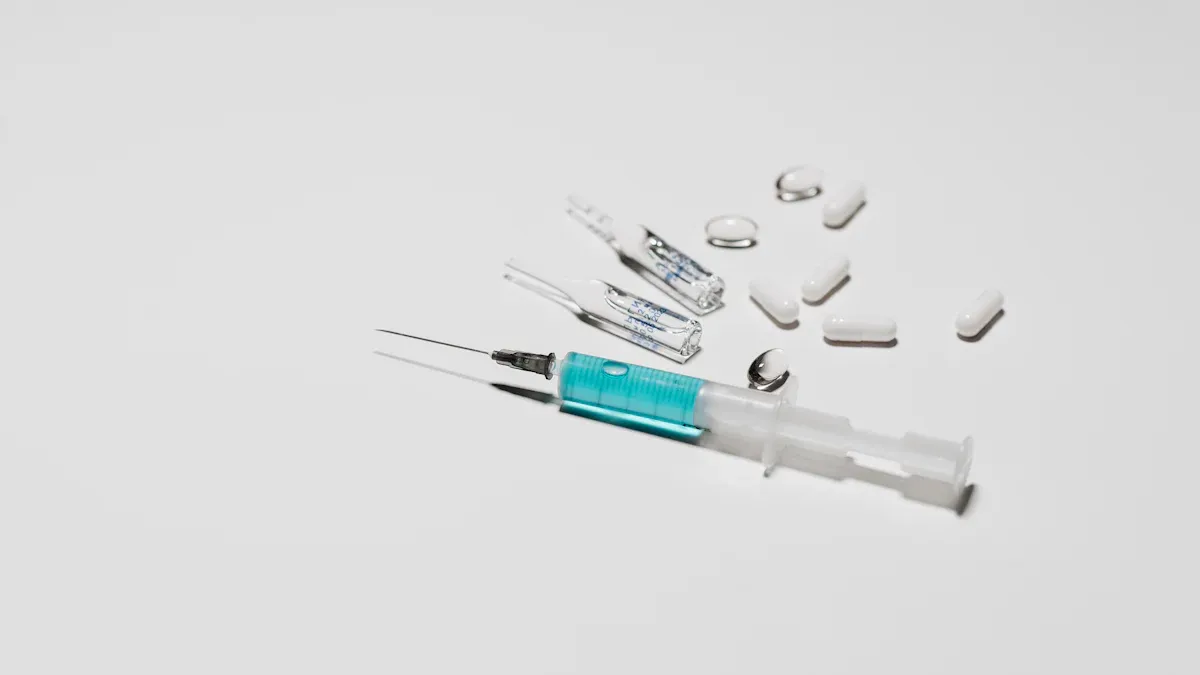
TAC Coating is a specialized thin film applied to medical devices using advanced techniques such as CVD Coating. This innovative coating enhances surfaces with properties like resistance to wear and corrosion. Additionally, sic Coating can be utilized to further improve performance. You’ll find TAC Coating crucial for maintaining hygiene, as it supports sterilization processes. Its durability and compliance with safety standards make it indispensable in modern healthcare.
Key Takeaways
- TAC Coating adds a strong layer to protect medical tools.
- It stops damage, rust, and dirt from harming the devices.
- TAC Coating helps keep tools clean and safe for use.
- It makes cleaning easier and meets health rules for hospitals.
- The coating lasts long, so tools don’t need replacing often.
- This saves money and helps patients get better care.
Understanding TAC Coating

What is TAC Coating?
TAC Coating is a thin, protective layer applied to medical devices to enhance their performance. It is created using advanced techniques that ensure precision and uniformity. This coating acts as a barrier, protecting devices from wear, corrosion, and contamination. You’ll find it especially useful in environments where hygiene and durability are critical, such as hospitals and laboratories.
Unique Properties of TAC Coating
TAC Coating stands out due to its unique properties. It offers exceptional resistance to chemicals and high temperatures, making it suitable for sterilization processes. Its biocompatibility ensures that it is safe for use in devices that come into contact with the human body. Additionally, the coating provides a smooth surface that reduces friction, which is essential for surgical instruments and implantable devices.
Tip: The smooth surface of TAC Coating not only improves functionality but also makes cleaning and maintenance easier.
How TAC Coating Functions in Medical Devices
TAC Coating enhances the functionality of medical devices in several ways. It creates a protective shield that prevents damage from repeated use and exposure to harsh conditions. For example, surgical instruments coated with TAC maintain their sharpness and precision over time. In implantable devices, the coating minimizes the risk of adverse reactions by ensuring compatibility with body tissues. You can rely on TAC Coating to extend the lifespan of medical equipment while maintaining safety and performance.
Benefits of TAC Coating in Medical Device Manufacturing
Enhancing Sterilization and Hygiene
You know how critical sterilization is in medical environments. TAC Coating plays a vital role in maintaining hygiene by creating a surface that resists microbial growth. Its chemical resistance allows devices to endure rigorous sterilization processes, including exposure to high temperatures and harsh cleaning agents. This ensures that medical tools remain free from contaminants, reducing the risk of infections.
Note: A sterile surface not only protects patients but also ensures compliance with strict healthcare standards.
By using TAC Coating, you can enhance the safety and cleanliness of medical devices, making them more reliable in sensitive environments like operating rooms.
Improving Durability and Longevity
Medical devices often face wear and tear due to frequent use. TAC Coating provides a protective layer that increases their durability. It shields devices from corrosion, scratches, and other forms of damage. For instance, surgical instruments coated with TAC retain their sharpness and precision even after repeated use.
You’ll also notice that this coating extends the lifespan of implantable devices. Its biocompatibility ensures that it remains stable inside the body, reducing the need for replacements. This durability translates to cost savings and improved patient outcomes.
Ensuring Regulatory Compliance and Safety
Regulatory compliance is a top priority in medical device manufacturing. TAC Coating helps you meet these requirements by offering biocompatibility and safety. Its non-toxic properties make it suitable for devices that come into contact with human tissues. Additionally, the coating’s ability to withstand sterilization ensures adherence to hygiene standards.
Tip: Using TAC Coating simplifies the process of meeting industry regulations, saving you time and resources.
By incorporating TAC Coating, you can ensure that your devices meet both safety and performance standards, giving you peace of mind.
Applications of TAC Coating

Surgical Instruments
You rely on surgical instruments to perform precise and life-saving procedures. TAC Coating enhances these tools by providing a smooth, durable surface that resists wear and corrosion. This coating ensures that instruments maintain their sharpness and functionality even after repeated sterilization cycles.
Tip: TAC Coating reduces friction, making surgical tools easier to handle and improving precision during operations.
Instruments like scalpels, forceps, and scissors benefit significantly from this coating. It not only extends their lifespan but also ensures they remain hygienic and safe for use in sterile environments.
Implantable Devices
Implantable devices, such as pacemakers and orthopedic implants, require materials that are both durable and biocompatible. TAC Coating meets these needs by creating a protective layer that prevents corrosion and minimizes the risk of adverse reactions.
You’ll find that this coating ensures the device remains stable inside the body, reducing the likelihood of complications. It also enhances the device’s longevity, which means fewer replacements and better outcomes for patients.
Note: The biocompatibility of TAC Coating makes it an ideal choice for devices that interact with sensitive tissues.
Diagnostic Equipment
Diagnostic equipment, like imaging devices and endoscopes, must deliver accurate results while enduring frequent use. TAC Coating improves the performance of these tools by providing a surface that resists scratches and contamination.
This coating ensures that diagnostic devices remain reliable and easy to clean. You can trust TAC Coating to maintain the integrity of these tools, ensuring they provide consistent and precise results over time.
Callout: By applying TAC Coating, you enhance the efficiency and reliability of diagnostic equipment, which is crucial for accurate medical assessments.
TAC Coating offers you unmatched benefits in medical device manufacturing. It enhances sterilization, durability, and compliance with safety standards. By adopting this technology, you contribute to advancing healthcare.
Callout: TAC Coating not only improves device performance but also addresses critical industry challenges, ensuring better outcomes for patients and professionals alike.
FAQ
What makes TAC Coating different from other coatings?
TAC Coating offers unique properties like biocompatibility, chemical resistance, and durability. These features make it ideal for medical devices requiring safety, hygiene, and long-term performance.
Tip: TAC Coating’s smooth surface also reduces friction, enhancing device functionality.
Can TAC Coating be applied to all medical devices?
You can apply TAC Coating to most medical devices, including surgical tools, implants, and diagnostic equipment. However, compatibility depends on the device material and intended use.
How does TAC Coating improve patient safety?
TAC Coating minimizes microbial growth and ensures biocompatibility. This reduces infection risks and adverse reactions, making medical devices safer for patients during use or implantation.
Note: Its ability to withstand sterilization ensures consistent hygiene standards.


